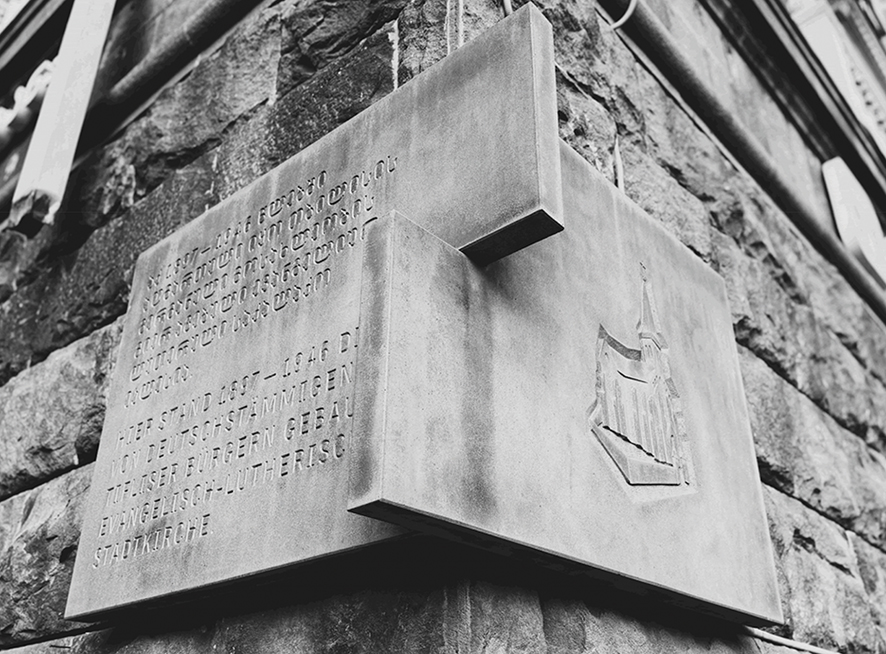German-Georgian relations have a rich and layered history that extends beyond diplomatic ties to encompass deep cultural exchanges. These interactions have left a lasting imprint on Georgian society, influencing everything from architecture and education to music, literature, and even cuisine. The legacies of German settlers in Bolnisi, Asureti, and Tbilisi continue to shape the cultural landscape of Georgia. The contributions to beer brewing and the symbolic presence of a part of the Berlin Wall further illustrate the depth of German-Georgian relations. This enduring cultural exchange enriches Georgia’s national identity, blending local traditions with European influences, and highlights the lasting power of intercultural dialogue and cooperation.
Architectural and Agricultural Contributions
German settlers in Georgia established several colonies, most notably in the regions of Kvemo Kartli and Kakheti. Katharinenfeld (now Bolnisi), Marienfeld (now Sartichala), and Alexandersdorf were among the most prominent. These settlers brought with them distinct architectural styles, agricultural practices, and religious traditions, significantly impacting local culture.
German settlers also brought advanced agricultural techniques, particularly in viticulture and dairy farming. They introduced new grape varieties and wine-making practices, which contributed to the diversification of Georgian viticulture. Bolnisi remains known for its wine production, with some techniques traceable to these early German influences. Additionally, the settlers introduced dairy farming practices, including cheese-making techniques, which have since been integrated into Georgian culinary traditions.
Education and Intellectual Life
German influence in the educational sphere began with the establishment of German schools and later the Tbilisi German Gymnasium in the late 19th century. This gymnasium became a prestigious institution, attracting students from the Georgian elite. It offered a curriculum that included German language, literature, and sciences, introducing students to German intellectual traditions.
The exposure to German literature and philosophy had a profound impact on Georgian intellectual life. Georgian writers and poets, such as Ilia Chavchavadze and Akaki Tsereteli, were influenced by German Romanticism and the works of philosophers like Goethe and Schiller. This influence is evident in their writings, which often reflect themes of individualism, nature, and national identity, resonating with the Romantic ideals popular in German literature at the time.
The establishment of the Tbilisi State University in 1918, with support from German academics, further solidified German influence in Georgian education. Notably, the university’s first rector, Ivane Javakhishvili, had studied in Germany and was influenced by the German educational model. The emphasis on rigorous academic standards and research methodologies at the university can be partly attributed to these German influences.

Musical and Artistic Influence
The impact of German culture on Georgian music is most evident in the establishment of the Tbilisi State Conservatoire in 1917, which became a hub for Western classical music in the Caucasus. German musicians and educators played a critical role in its early development.
Alexander Nitsche, a German conductor, was instrumental in shaping the Conservatoire’s curriculum and introducing Georgian students to European classical music traditions. He emphasized the study of composers like Bach, Beethoven, and Brahms, integrating these influences into the training of Georgian musicians. This Western classical foundation is evident in the works of Georgian composers such as Zakaria Paliashvili, whose operas combine Georgian folk music with Western operatic styles. Paliashvili’s opera ‘Abesalom da Eteri’ (Abesalom and Eteri) is a notable example, blending Georgian melodies with complex harmonic structures influenced by German Romantic music.
The German influence extended to the visual arts, with many Georgian artists studying in Germany or being influenced by German artistic movements. The expressionist and modernist art movements had a particular impact on Georgian artists in the early 20th century. For example, David Kakabadze, a pioneering figure in Georgian modernism, was influenced by German expressionism and the Bauhaus movement, which is evident in his use of abstraction and experimentation with form and color.
Culinary Influences
While German influence on Georgian cuisine is less well-documented, it nonetheless exists, particularly in regions where German settlers lived. The introduction of new culinary techniques and ingredients by German settlers added to the rich tapestry of Georgian gastronomy.
German settlers introduced methods of food preservation, such as pickling and smoking, which became integrated into local food practices. Additionally, they brought new crops, such as certain varieties of potatoes and cabbage, which were not previously common in Georgia. These ingredients have since been incorporated into traditional Georgian dishes. The region of Bolnisi, for instance, is known for its sausages and dairy products, which bear similarities to German culinary traditions.

German settlers in Georgia brought with them a tradition of beer brewing, which has had a lasting impact on the country’s beverage industry. German settlers established breweries that produced beer using traditional German techniques. This included the use of specific strains of barley and hops, which were previously uncommon in Georgia. These early brewing practices introduced a new dimension to Georgia’s rich tradition of wine and spirits. Today, the legacy of German beer making is evident in Georgia’s growing craft beer industry. Several breweries produce German-style beers, such as lagers and wheat beers, which have become popular among Georgians. Beer festivals, celebrating both local and German brewing traditions, have also become a feature of Georgia’s cultural calendar.
German Heritage: Bolnisi, Asureti, Tbilisi
Bolnisi, originally named Katharinenfeld, was established by German settlers in the early 19th century and remains a significant repository of German heritage in Georgia. The town’s German architectural heritage is characterized by distinctive houses featuring steep roofs, timber framing, and large windows. This architectural style contrasts sharply with traditional Georgian stone and brick constructions. Notably, many houses in Bolnisi have been well-preserved, providing a tangible link to the town’s past. The German settlers in Bolnisi also brought advanced agricultural techniques, particularly in wine-making. They introduced new grape varieties and cultivation methods, significantly impacting the region’s wine industry. Today, Bolnisi remains a prominent center for wine production in Georgia, with some practices traceable to the early German influence.
Asureti, formerly Elisabethtal, is another notable site of German settlement in Georgia, founded by Swabian Germans in the early 19th century. The town’s layout, with its central church square and orderly street grid, reflects typical German village planning. The houses, many of which are preserved, showcase German architectural styles, with half-timbered structures and spacious courtyards. These elements distinguish Asureti from traditional Georgian villages. The Evangelical Church in Asureti is a central landmark, embodying the German Gothic style, with pointed arches and vaulted ceilings. This church serves not only as a place of worship, but also as a community center for cultural and social events, highlighting the role of the German settlers in shaping the town’s cultural landscape.

Tbilisi, the capital of Georgia, has a rich German heritage, particularly in the Chugureti district, which was a hub for German immigrants in the 19th and early 20th centuries. Often referred to as the “German Quarter,” Chugureti is notable for its historic buildings and cultural landmarks. The district’s architecture includes several structures designed by German architects, featuring styles such as Art Nouveau and Gothic Revival. These buildings are an integral part of Tbilisi’s urban fabric and offer a glimpse into the city’s diverse cultural history. The Lutheran Church of St. Peter and Paul, located in Chugureti, is a significant symbol of the German presence in Tbilisi. Built in 1897, the church is a striking example of Gothic Revival architecture, with its tall spire and intricate façade. This church is a cultural and religious center for the German community in Tbilisi, hosting numerous events and gatherings.
A poignant symbol of Germany’s divided past, a segment of the Berlin Wall is displayed in Tbilisi, signifying the strong historical and cultural ties between Germany and Georgia. The piece of the Berlin Wall, located near the Metekhi church, serves as a powerful reminder of the struggles for freedom and unity faced by both Germany and Georgia. For Georgians, who have experienced their own challenges with territorial integrity and political sovereignty, the wall is a symbol of hope and resilience. The presence of the Berlin Wall in Tbilisi has educational significance, offering a tangible connection to a pivotal moment in world history. It underscores the importance of historical memory and the shared values of democracy and human rights. The wall has become a focal point for discussions on the lessons of history and the importance of international solidarity.
Political and Cultural Exchange in the 20th and 21st Centuries
The relationship between Georgia and Germany has continued to evolve, particularly after Georgia’s independence from the Soviet Union. Germany was one of the first countries to recognize Georgia’s independence in 1992, and, since then, the two nations have maintained strong diplomatic and cultural ties.
The establishment of the Goethe Institute in Tbilisi, which celebrates its thirtieth anniversary this year, has been a significant factor in promoting German culture and language in Georgia. The institute offers language courses, cultural programs, and supports academic exchange between the two countries. This ongoing cultural exchange has helped maintain and renew the German influence on Georgian intellectual and cultural life.
Today, Germany remains one of Georgia’s most important partners in the European Union, supporting various development projects in education, governance, and infrastructure. Cultural exchanges continue to flourish, with numerous joint art exhibitions, concerts, and academic conferences highlighting the deep and enduring ties between the two nations.
By Ivan Nechaev














